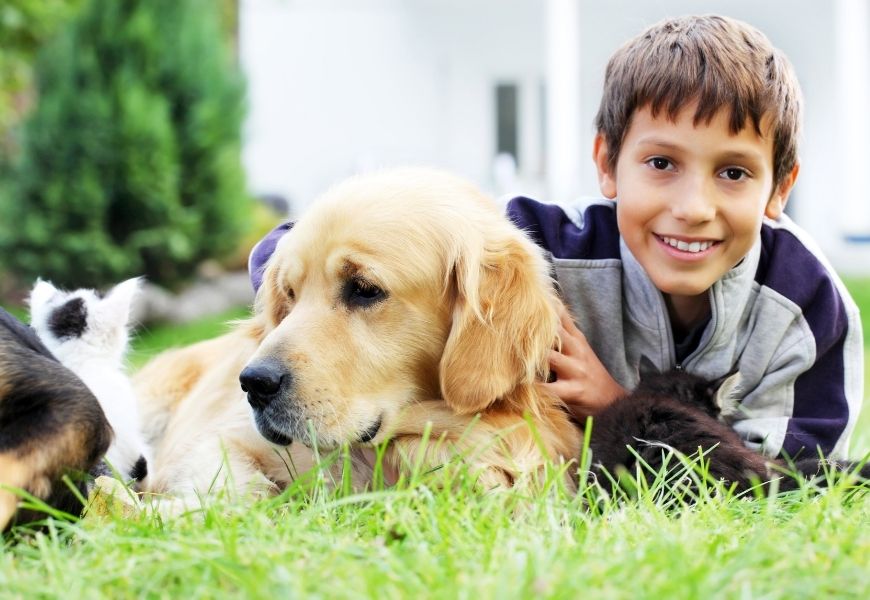 *The names used in this article are pseudonyms. Although the experiences described are authentic, details and events have been deleted or changed to ensure student privacy.I decided that Robert and I were going to go ahead and get started with our session. Shane was late, and this wasn’t the first time. The last two times Shane was late, it was because he was at his grandma’s house at the time of our session. Although Shane’s grandmother had adequate internet connectivity, the set up at her house was different and changing the process of logging in was stressful for him. At Shane’s home, he was in the family room with his beloved dog, Dakota, softly snoring in the background and his jet kitty Midnight was usually at his feet or in his lap or tiptoeing around his keyboard. There was a window to his left and on sunny days he often remembered to close the curtains without any cues.When Shane was late, there was always a good reason. According to Shane’s mom, he was often very anxious, sometimes distraught when he missed a session. Following the absence, I received a frantically worded email from Shane expressing his apologies. Responding to Shane with my written words helped to calm his fears and offered assurance to him that Robert and I would be there for him next time and that everything was okay.Shane often started out therapy sessions stating that he didn’t know why he had to come to speech because he didn’t have any speech problems and it wasn’t helping his education. Kicking off the session with Shane re-reading a written script or story about why he was attending speech sessions was often needed before we could move on to practice his social communication goals.
*The names used in this article are pseudonyms. Although the experiences described are authentic, details and events have been deleted or changed to ensure student privacy.I decided that Robert and I were going to go ahead and get started with our session. Shane was late, and this wasn’t the first time. The last two times Shane was late, it was because he was at his grandma’s house at the time of our session. Although Shane’s grandmother had adequate internet connectivity, the set up at her house was different and changing the process of logging in was stressful for him. At Shane’s home, he was in the family room with his beloved dog, Dakota, softly snoring in the background and his jet kitty Midnight was usually at his feet or in his lap or tiptoeing around his keyboard. There was a window to his left and on sunny days he often remembered to close the curtains without any cues.When Shane was late, there was always a good reason. According to Shane’s mom, he was often very anxious, sometimes distraught when he missed a session. Following the absence, I received a frantically worded email from Shane expressing his apologies. Responding to Shane with my written words helped to calm his fears and offered assurance to him that Robert and I would be there for him next time and that everything was okay.Shane often started out therapy sessions stating that he didn’t know why he had to come to speech because he didn’t have any speech problems and it wasn’t helping his education. Kicking off the session with Shane re-reading a written script or story about why he was attending speech sessions was often needed before we could move on to practice his social communication goals.
Shane told me it was silly to practice these skills because he didn’t have any friends and having friends wasn’t going to help his education.
I remember the first time Shane told me that he thought attending speech sessions was a waste and that I wasn’t helping him. He wanted to know why he had to come to speech.When Shane asked his question, he was agitated, accusatory–almost rude. He needed me to understand that from his point of view, kids that went to speech had difficulty forming sounds. He didn’t have that challenge, therefore, speech was a waste of time.It made sense. I thanked Shane for explaining and said that I would come back to the next session with an answer to his question. Then I gave both boys a homework assignment: bring an item to Show and Tell and be ready to talk about it at our next session. Shane asked if he could bring his dog and the group decided that pets counted as appropriate items for show and tell.At the next session, I shared a Google document with Robert’s and Shane’s speech goals and a narrative about why working toward these goals positively impacted their education. I linked social communication skills with relationships and relationships to education and education to jobs and jobs to independence.Shane reluctantly agreed that what I had written made sense. I could tell he wasn’t wholly satisfied and told him that as we continued our sessions that I might revise this answer. I explained that I was still figuring out how to answer his question. Both boys felt it was fair that I should have more time to answer Shane’s questions and we checked “Review Goals” off of our visual schedule and moved on to the next item: Show and Tell.As Robert shared his basketball on the webcam, Shane was quiet–at first. He didn’t ask any questions or make any comments. Shane started talking quietly over Robert about Dakota, his snoring dog. Shane talked nonstop for what seemed like 10 minutes without wondering if his group partners were listening.When Shane paused to take a breath, I prompted Robert to ask a question. Shane just kept talking, now walking around the room with his laptop following his cat. Both Robert and I mentioned we were getting seasick with all of the camera motion, but Shane just kept on going.I asked Robert if he had any questions for Shane and Shane proceeded to talk over us. I modeled respectfully interrupting Shane and told the group it was my turn to share. I shared a Show and Tell checklist of procedures establishing who would go first, time limits, when and how to ask each other questions, and posters of verbal starter options in case the kids didn’t know what to say.At the next session, Shane wanted to know why we were doing Show and Tell and expressed concern that this was not helping his education. We returned to the “Review Goals” on the visual schedule and shared my screen with the narrative about Shane’s and Robert’s goals. Then Shane told me it was silly to practice these skills because he didn’t have any friends and having friends wasn’t going to help his education. He then went on to tell Robert and I that he didn’t talk to anyone but his mom, dad, grandma, and us. And when he talked to his family, he didn’t need to follow a checklist.I had to admit, Shane had a point. He wasn’t wrong. This was Shane’s world. I told him I needed to think about what he said. I needed to think about Shane.I needed to try to see things from his point of view.During another session, I presented videos of students acting out social scenarios, then reviewed questions about strategies the kids in the video could have used. Shane told me he could tell me the answers to the questions on the worksheet but that it wasn’t helping his education, it wasn’t helping him–I wasn’t helping him. He expressed that the videos were illogical because they didn’t represent any experiences he had had in the past or would ever have.Shane was speaking his truth.I never saw it as my job to make him care about what I cared about. I needed to make him aware that when he kept on talking without stopping, other people may interpret that as ignoring. And sometimes other people view ignoring as disrespectful. They don’t like it and they may frown or turn away or say angry words.No matter how my sessions with Shane began, they always ended the same. He said,“Thank you for talking to me. I don’t have anyone else to talk to except my mom, my dad, grandma, Dakota, and Midnight. You are my friends.”I always responded to both of the boys in the group by saying I was glad to talk to them and that they made my day and that they were both important to me. Robert and Shane knew that web cams didn’t lie and neither did I.They knew I was speaking my truth.

